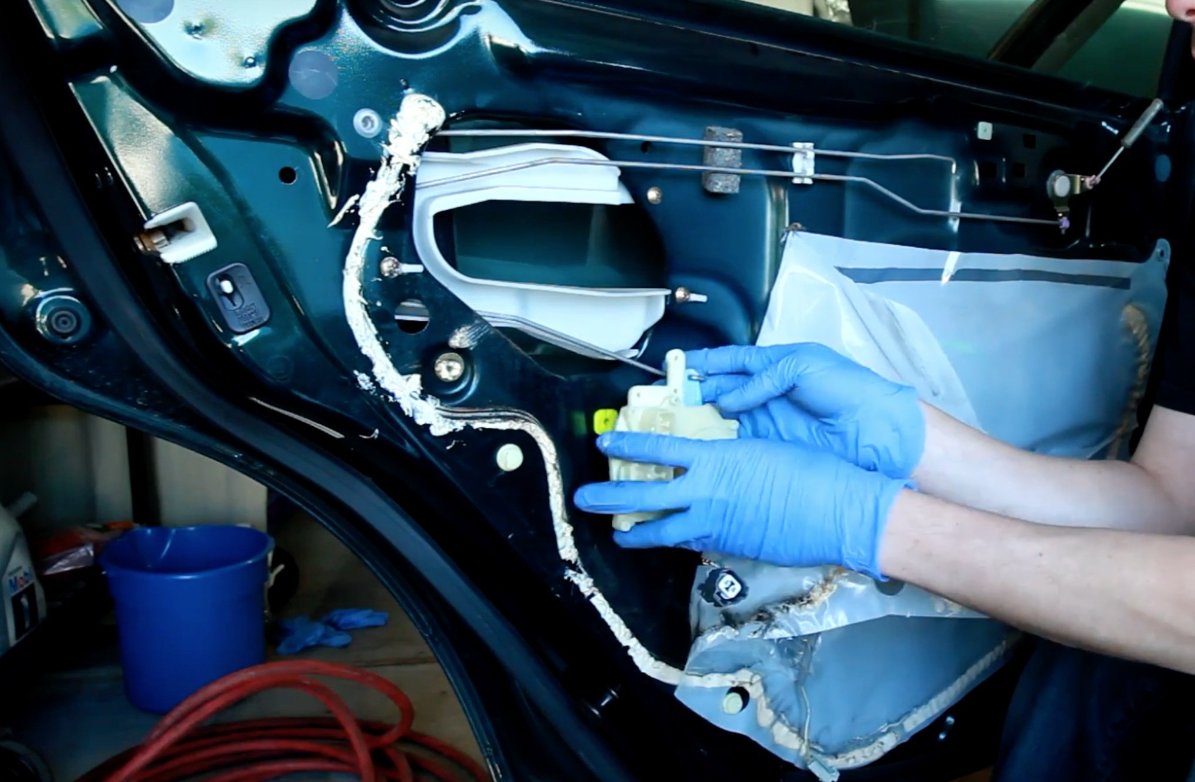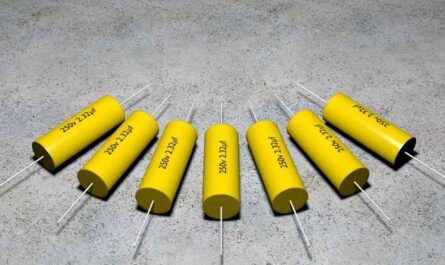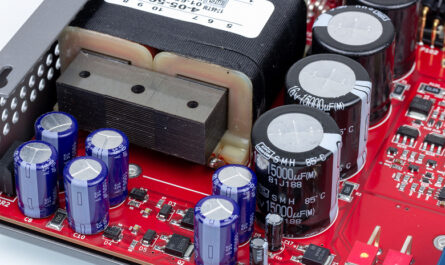Your Honda’s car door lock failure may be down to one component – the actuator! A door lock actuator is a component that triggers the locking/unlocking mechanisms of your car doors. So, it might be worth checking the actuator if your Honda door lock isn’t working properly. This vehicle’s component is connected to a series of gears that performs these actions.
Some modern Honda cars have a complete door lock assembly that is impossible to be separated. But if your actuator can be fixed without replacing the entire system, you’re in luck, and this post is for you. We’ll show you how to repair your broken Honda door locks actuator.
Can a Honda Door Lock Actuator Be Repaired?
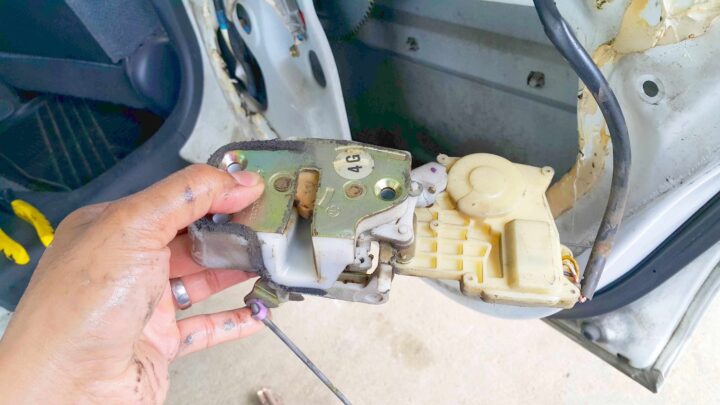
Honda door lock actuators can be a tad of a hassle to fix. But it’s doable with the right tools and instruction. If your door lock actuator isn’t working, check the cable connecting it to the inner door handle. Check to see if it is broken.
If there’s no corrosion or damage on either of the actuator assemblies, lubricate them using a suitable lubricant. Then push them down on both sides till they click into place.
However, if there’s corrosion or debris on either actuator, clean and lubricate them. Ensure that when reconnecting the cable to the actuators, you connect an end to the inner door handle. They connect the other end to the actuator.
Once everything is connected properly, try opening and closing the door several times. This will help it to register well in the computerized system.
In the next section, we’ll explain how to fix door lock actuators on most cars, including Honda. For beginners, the scariest part is popping and pulling on the door panel; then, it’s generally a calm process.
How to Fix a Broken Honda Door Lock Actuator
- First, remove the inside door panel. Then open the door and remove the screw behind the door pull. There may be a cover over the screw. Remove the screw behind the door handle and then pull the handle outwards.
- Use a dash removal tool or a flathead screwdriver to pop out the window switch. Then unplug any electrical wires.
- Use a flathead screwdriver to pull the plastic panel outwards and then upwards. It should come off easily. If there’s a weather guard under the door panel, remove that as well, but carefully.
- Use a Philip-head large screwdriver to lose the three screws in the door latch.
- Remove the hex head bolt at the lower part of the window sliding support using a 10mm socket.
- Next, use the large screwdriver to lose the door lock knob.
- Then, remove the linkage rod at the bottom of the latch. Now, you’ll also need to remove the door handle.
- Use a socket to loosen the two 10mm hex bolts holding it in place. Then unscrew it from the threaded rod to allow you to slide it out of the door.
- Slide the latch and actuator down the base of the door. Then pull it out carefully. You may need to disconnect the electrical cord to achieve this.
- Next, unscrew the screws that hold it in place. Then, take off the old actuator from the door latch.
- You can now screw in your new actuator.
- Finally, reassemble the door by following these steps, but in reverse order.
What Causes a Door Lock Actuator to Break?
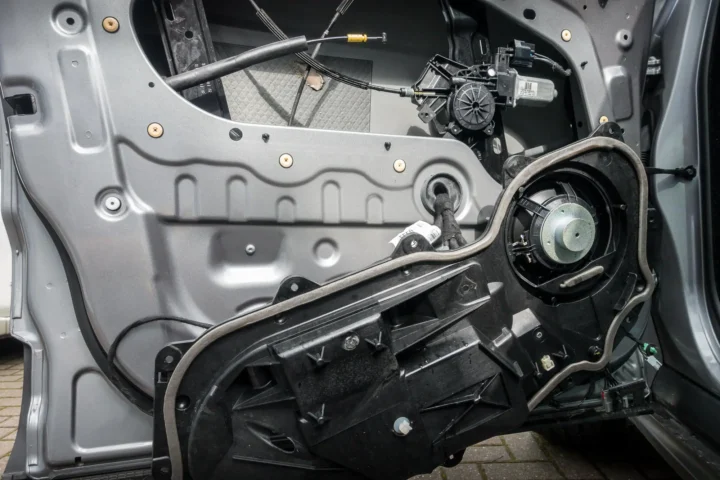
A door lock actuator comes with a small electric motor inside the housing. As the power lock is triggered, power is applied to the actuator when the circuit is completed. It changes position from unlocked to locked or vice versa. A gear, rod, or cable on the actuator connects to the door latch.
Failure can occur if the actuator is exposed to moisture over time. And when it gets into the electrical components, it becomes an issue. Corrosion will form and disrupts the connections. This will result in intermittent operation or total failure.
Dust, oil, and other contaminants can also affect the mechanical portion, causing it to be more difficult to move. This causes strain on the electric motor more than it should have. In addition, physical damage can happen from an accident on the door.
This can also occur if someone attempts to jimmy the lock. More common, excessive use for years can wear out the actuator.
As an electrical component, it’s always possible for an unforeseen fault to occur. And generally, you can’t prevent the causes from happening. When it happens, you’ll simply need to replace the actuator.

If your door lock actuator is failing or has gone bad, some common signs can signal it’s the culprit:
- One door lock stops working: If only a door lock quits functioning, it’s likely that the actuator is faulty.
- More than one press is enough: A weak door lock actuator may need two locks or unlock presses to move the lock cable or rod.
- The alarm suddenly goes off when opening the door: The security system always ties into the door locks. When it detects an armed open door, the alarm sounds.
- When the door Ajar light stays on, a switch in the actuator or latch detects an open door. However, if it isn’t working, there’s a problem.
- ‘Machine gun’ or buzzing noise when unlocking or locking: A failing actuator might cause a squeal, buzz, or unexpected ‘rat-a-tat-a-tat’ noise.
If you still have doubts about being able to fix your damaged door lock actuator, it’s best to seek professional help. Failure to repair it properly may lead to more problems with your car door.

